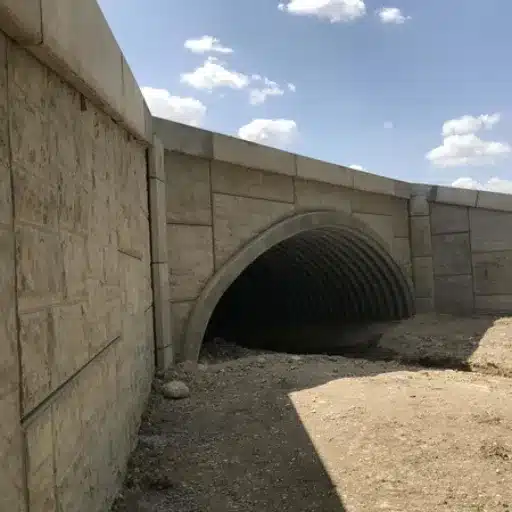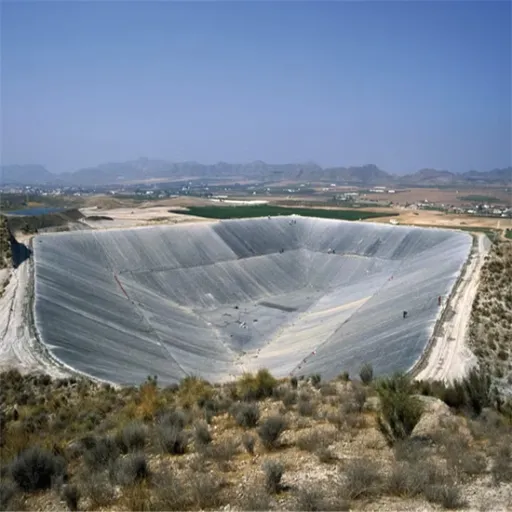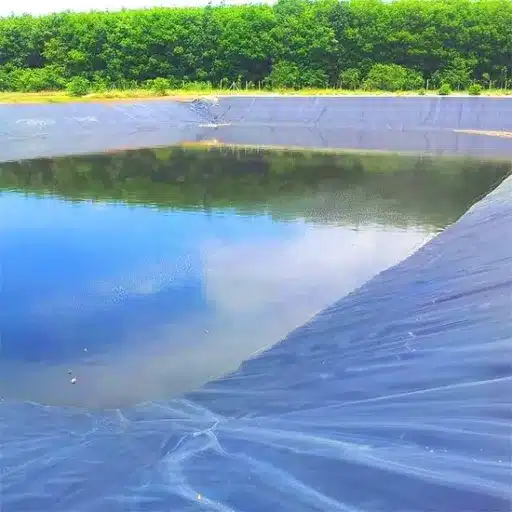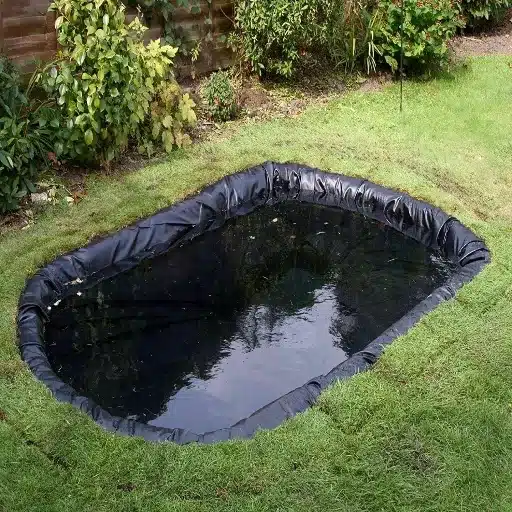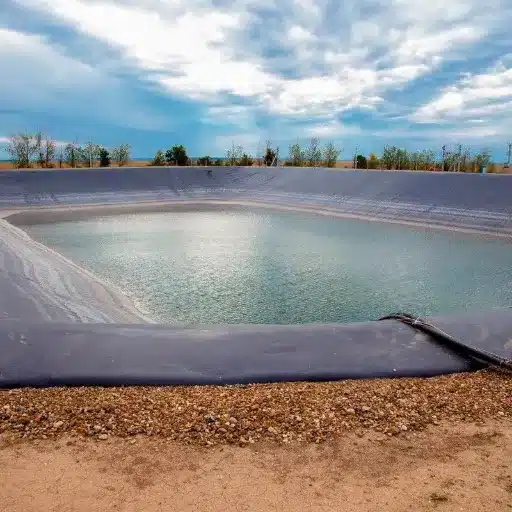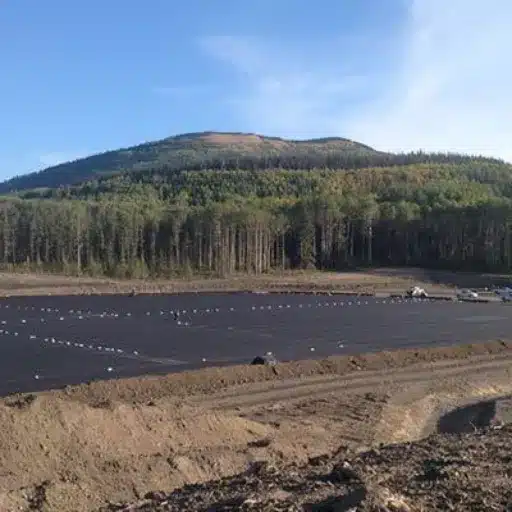Create infrastructure that is going to last long and will not be a problem in the future by coming up with new techniques, and the establishment of MSE walls has given a whole new direction to soil retention and stability. Among the types of earth walls, geosynthetic reinforcement has been found to be the most popular one due to its multifunctionality, reasonability in price, and longevity. The current article is going to delve into the important aspects of MSE wall design and discuss the contribution of geosynthetics to the strength and performance of the wall. It does not matter if you are a professional engineer, a contractor, or just a curious person who wants to learn about the modern construction techniques, this post will provide you with the design process, the practical applications, and the long-term benefits of geosynthetic-reinforced earth walls. Keep us company while we simplify the science and strategy behind these revolutionary structures.
MSE Retaining Walls — Introduction
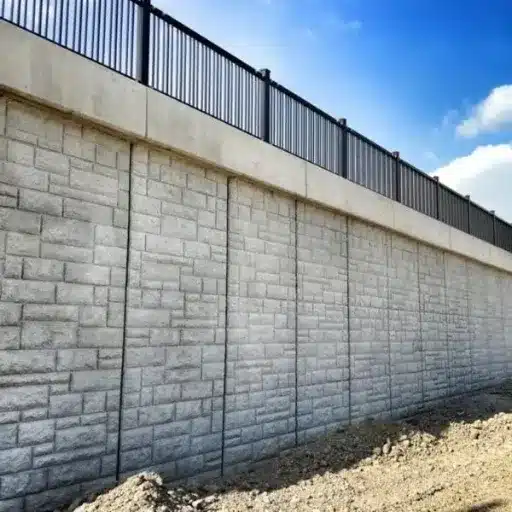
Mechanically stabilized earth walls (MSE retaining walls) are modern engineering structures that hold soil with the aid of reinforcement, namely, geosynthetics and compacted earth. They are the first choice coupled with innumerable other benefits to the various infrastructures needing high reliability.
What Is a Mechanically Stabilized Earth (MSE) Retaining Wall?
MSE retaining walls are one of the most innovative types of retaining structures meant to fixate soil and allow the construction of vertical or near-vertical surfaces. They consist of layers of compacted granular fill and the use of synthetic materials, known as reinforcements, which materials can be geosynthetics or metal. The use of these materials helps in distributing the loads in the soil, thus reducing the stress, and providing more stability.
Among the reasons for the popularity of MSE retaining walls are: cost-effectiveness, versatility, and adaptability to any type of site. Their modular structure offers the advantage of quicker construction as compared to the traditional methods of concrete or masonry retaining walls. Federal Highway Administration (FHWA) attests the wide use of these walls in highway projects, where they can bear heavy loads ranging from 250 to 400 kPa (kilopascal), depending on the design and materials chosen.
MSE Walls — Importance in Construction
Mechanically Stabilized Earth (MSE) walls are an integral part of modern construction because of their price, durability, and versatility to cope with difficult conditions. These structures are widely used for highways, retaining walls, bridge abutments, and railway projects mainly supported by the heavy load capabilities and at the same time reduced material and labor costs.
📊 Market Analysis Insights
- Global MSE wall market has experienced considerable growth driven by urban and transport infrastructure development
- Cost Savings: MSE walls can cut construction costs down to 70% of traditional retaining wall systems (2022 engineering report)
- Time Efficiency: Project timelines shortened by 20-30% on average due to modular design
Advantages of MSE Retaining Walls
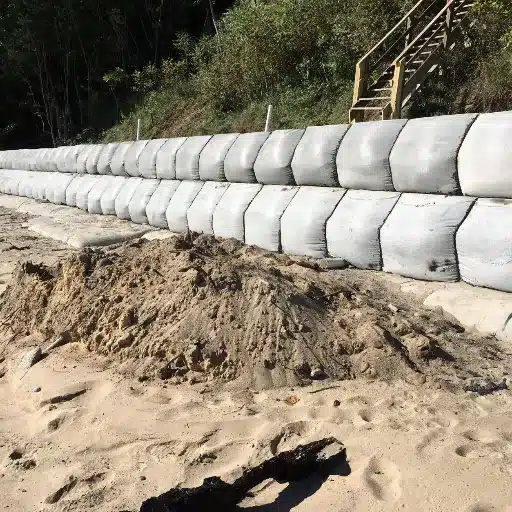
The advantages of MSE retaining walls are so many that one can hardly count them. These advantages range from reduced costs of up to 30% compared to the classic retaining walls to speedier installation which in turn translates to a reduction in the total time of the project by 20-30%. Moreover, their design that allows for stacking them moreover makes it easy and efficient for people that want quick infrastructure projects over time.
MSE Retaining Wall’s Cost-Effectiveness and Efficiency
MSE retaining walls, which is an abbreviation for Mechanically Stabilized Earth, have captured the attention of the construction industry because of their cost-effectiveness and efficiency. It is evident from analyzing a comparison of MSE wall systems with traditional retaining wall systems that MSE walls use less material, less area to excavate, and need simpler installation which results in a reduction of the initial construction cost. Recent statistics indicate that MSE walls can bring about savings of 20%-50% when compared to standard concrete retaining walls, depending on the size and state of the project.
💰 Cost Savings Factor: One more aspect that plays a major role in the overall cost savings is the rapid construction period. The modular composition of the MSE wall components including the precast concrete panels or geosynthetic reinforcement has made it possible to conduct the assembly of the walls in a streamlined fashion thus reducing the typical project duration by 30%. Consequently, this cutting back on labor and project duration leads to a significant reduction in costs for infrastructure projects.
Long Life and Resistance to Corrosion
MSE (Mechanically Stabilized Earth) retaining walls are commonly associated with outstanding durability and environmental resistance, so they are mostly used as the primary choice on construction sites. They are built with strong reinforcements high strength materials that can include galvanized steel or polymeric strips, specially developed not only to bear but also to keep their structure intact under unpleasant circumstances and significant loads. For instance, galvanized steel reinforcements are often coated with zinc, which forms the corrosion protective barrier and their service life in most places is projected to be more than 75 years.
| Material Type | Characteristics | Service Life |
|---|---|---|
| Galvanized Steel | Coated with zinc for corrosion protection | 75+ years |
| HDPE Geogrids | Resistant to chemicals, UV rays, and water | 100+ years |
As a result of the recent improvements, the corrosion-free life of the MSE retaining wall system has been increased. Polymeric reinforcements, high-density polyethylene (HDPE) geogrids for instance, represent one of the best alternatives to steel and are extremely resistant to the three enemies of materials – chemicals, UV rays, and water. Laboratory testing, for example, has proved that polymeric reinforcements would hold up to 100 years even in the most favorable settings, thus beating the traditional materials in extremely corrosive soil or water conditions.
Types of Materials Used in MSE Walls
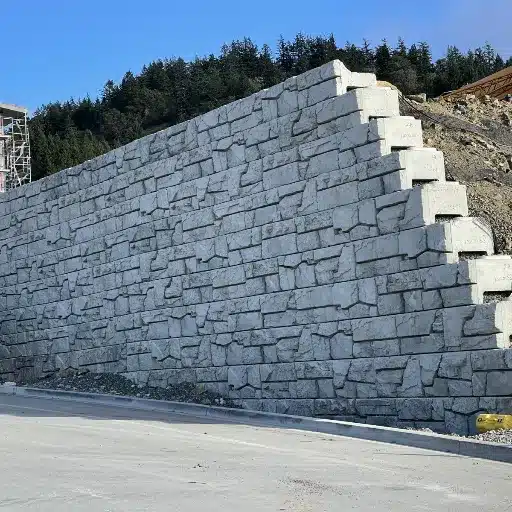
It seems to me the materials utilized in MSE walls mainly consist of steel reinforcements like galvanized strips or ladders, as well as polymeric options like HDPE geogrids. The selection of these materials is based on their durability, corrosion resistance, and performance in particular environmental conditions.
Geogrid Reinforcement
Types and Design Considerations
Geogrids are usually classified into two types: uniaxial and biaxial geogrids according to the direction of their tensile strength. Uniaxial geogrids can only bear pressure applied in one direction and thus their application is limited mostly to retaining wall constructions. Biaxial geogrids, on the other hand, can resist two-way stress and hence find their way into the use for ground stabilization applications. One has to consider the wall height, soil type, and expected loads, etc. for the selection of the geogrid type.
🔷 Uniaxial Geogrids
- Bear pressure in one direction
- Primary use: Retaining wall constructions
- Optimized for specific load patterns
🔶 Biaxial Geogrids
- Resist two-way stress
- Primary use: Ground stabilization applications
- Versatile load distribution
Performance Data and Benefits
Scientific studies support the idea that geogrid reinforced MSE walls have a significant increase in their structural integrity. For instance, it has been proven in field experiments that the walls designed with geogrids can undergo seismic events with hardly any deformation. Moreover, the application of geogrids leads to the reduction of soil movement in the lateral direction as the stresses are spread evenly across the structure which is a major contributing factor to the improvement of the performance over years.
Real-World Applications
MSE walls strengthened with geogrids have found their way into many infrastructure projects like bridges, highways, and industrial facilities. The Federal Highway Administration (FHWA) has reported a case where up to 40% of the construction cost could be saved when geogrid reinforcement was used in a highway expansion project. Besides that, geogrids make the entire installation process faster and easier due to their lightweight and easy handling characteristics.
Selecting Backfill Materials
The performance and service life of mechanically stabilized earth (MSE) walls are very much dependent on the selection of backfill materials. When appropriate backfill materials are used mutually with geogrid reinforcement, they give the best results in terms of stability, drainage, and load distribution. Well-graded granular materials, sand, gravel, or crushed stone, are all recommended by the Federal Highway Administration (FHWA). These materials possess excellent drainage and shear strength characteristics which, in turn, lower the risk of hydrostatic pressure and hence wall failure.
| Specification | Requirement | Purpose |
|---|---|---|
| Particle Size Range | 0.075 mm to 75 mm | Optimal drainage and compaction |
| Fines Content | Maximum 15% (passing #200 sieve) | Prevent drainage blockage |
| Plasticity Index (PI) | 0% to 6% | Avoid excessive settlement/deformation |
It is commonly agreed that the backfill material should consist of particles ranging from 0.075 mm to 75 mm as drainage can be blocked in the case of very fine particles and compaction may become difficult in large particles. Tests also confirm the necessity to meet certain criteria for the backfill material, like 15% maximum fines content (passing the #200 sieve) and a plasticity index (PI) of 0% to 6%, in order not to functionally create excessive settlement or deformation under load conditions.
Installation Process of MSE Retaining Walls
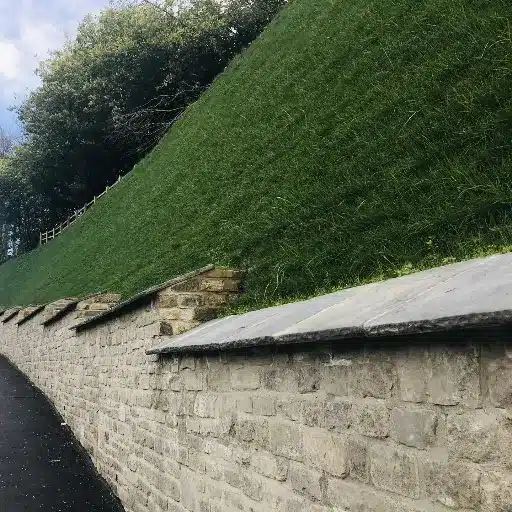
In the case of MSE retaining walls, I make sure to use proper filling material, which ideally meets the criteria, i.e., maximum particle size, limit of fines content, and plasticity index. This would help in avoiding issues related to drainage, compaction, and even possible settlement or deformation under the weight.
Site Preparation and Excavation
Site preparation and excavation can be viewed as the main steps involved in the construction of MSE retaining walls, and they are also very important in getting the walls done right and reputable. The first thing to do is to carry out a thorough site assessment that will consider soil conditions, local topography, and drainage requirements. Usually, a geotechnical engineer will do this evaluation in order to give the site a thumbs up or suggest some modifications.
🏗️ Excavation Process Steps
- Remove trees, plant life, and obstructive materials
- Eliminate soft and unsuitable layers of soil
- Dig foundation trench 6-12 inches deeper than frost line or per design specs
- Ensure ground is even and firm with slight incline for water drainage
- Use laser levels and GPS-guided machinery for accurate placement (major contracts)
The process of excavation involves getting rid of the trees, plant life, and anything else that may hinder the foundation including soft and unsuitable layers of soil. For the wall foundation trench, it is a common practice to dig at least 6 to 12 inches deeper than the frost line or as per the specs in the design plans. The ground where the excavation is taking place should be even and firm, with a slight incline to cause the water to run away from the wall. For major contracts, laser levels and GPS-guided machinery are often employed to get accurate placements and levels.
Layering and Placement of Reinforcement
One of the main reasons why the stability and life span of retaining walls depend on geometric layering and reinforcement placement. The reinforcement geogrids or geotextiles must be placed in layers that correspond to the design specifications to assure effective load distribution. Usually, the reinforcement layers are installed every 8 to 12 inches (20 to 30 cm) the height of the wall, according to the wall’s height and loading requirements.
📐 Technical Specifications: Current information shows that employing high-strength geogrids of tensile strengths between 20 kN/m and 60 kN/m has a positive effect on the lateral earth pressure resistance capacity of the wall. It is very important to support the reinforcement layers in a very careful manner and make sure that they are being pulled during the placement so that there is no slack which would undermine the performance. The problem of overlapping of the reinforcement at the joints should be solved according to the manufacturer’s recommendations which usually include a minimum overlap of 3 feet (1 meter).
MSE Retaining Walls: Typical Uses
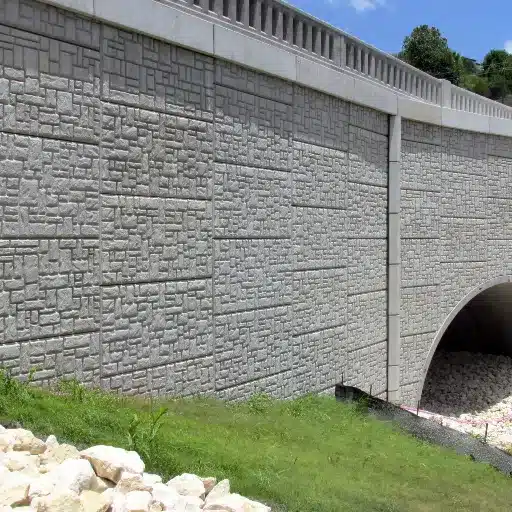
Proper installation of MSE retaining walls is the major aspect addressed by the above question, in my opinion. Wall performance and integrity when subjected to lateral earth pressure primarily depend on proper fastening, tensioning of the geogrids, and compliance with the specified overlap lengths.
Construction of Roads and Highways
Mechanically Stabilized Earth (MSE) retaining walls are extensively employed in road and highway construction due to their durability, economic advantages, and versatility at different sites. By supporting the construction of roads, bridge abutments, and ramps, these walls not only stabilize but also cut down the amount of digging required to a minimum.
🛣️ Highway Construction Statistics
- Load Capacity: Can accept surcharge pressures of up to 4,000 psf (pounds per square foot)
- Service Life: 75 years or more when built and cared for properly
- Seismic Resistance: Exceptional performance in earthquake-prone areas
- Market Growth: Increasing investments in infrastructure development
The recent market analysis of MSE retaining walls suggests that the market will grow due to the ever-increasing investments in infrastructure development. For example, in the United States, the Federal Highway Administration (FHWA) highlights the role of MSE walls in highway construction, pointing to their capacity to carry heavy loads and their seismic resistance as the main reasons for that. Usually, these walls can accept surcharge pressures of up to 4,000 psf (pounds per square foot) and are very durable—75 years or so lifetimes are common if built and cared for properly.
Environmental and Aesthetic Solutions
Modern Mechanically Stabilized Earth (MSE) walls act not only as structure support but also as the means for the application of green concepts in the building of natural landscapes and obtaining ecological sustainability. Being an important component of eco-friendly infrastructure, MSE walls have developed to include all sorts of green-facing technologies, like the ones with plant cover facilitating the growth of plants. The trees on such facades help in bringing down the urban heat island effect, improving air quality, and providing a living space for wild plants and animals.
🌿 Stormwater Management
Vegetation-covered MSE walls can retain up to 70% of water flowing during rainfall, reducing surface runoff and flood risks in urban areas.
🌱 Environmental Benefits
- Reduce urban heat island effect
- Improve air quality
- Provide habitat for wildlife
- Enable groundwater recharge
A study has found that vegetation-covered MSE walls can contribute to better stormwater management. More specifically, the study results point to the potential of vegetative walls to retain as much as 70% of the water flowing down during the rain, which would mean less surface runoff and consequently less flood risks in urban areas. Along with that, modular MSE wall systems are often designed to include permeable solutions that help groundwater recharge and erosion control.
Reference Sources
-
Geoquest USA – Mechanically Stabilized Earth (MSE) Retaining Walls
This source provides insights into the design, construction, and applications of MSE retaining walls, focusing on their benefits and use in infrastructure projects.
Geoquest USA – MSE Retaining Walls -
Federal Highway Administration (FHWA) – MSE Wall Fills
A comprehensive guide from the FHWA that discusses the design and structural considerations for MSE walls, ensuring compliance with geotechnical and structural standards.
FHWA – MSE Wall Fills -
Informed Infrastructure – Retaining Wall and MSE Guide
This resource targets professionals involved in designing and specifying materials for MSE retaining walls, offering practical insights and specifications.
Informed Infrastructure – MSE Guide
Frequently Asked Questions (FAQs)
❓ What are MSE retaining walls?
MSE retaining walls, also known as mechanically stabilized earth walls, are structures that utilize soil reinforcement techniques to offer support and stability. The composition of these walls is a mixture of the wall face components and the reinforced soil, which together help to preserve the soil behind the wall face and to stop erosion on the steep slopes.
❓ How do soil reinforcement techniques work in MSE walls?
The soil reinforcement technique in MSE walls entails the application of materials such as geogrids, polymer or steel that strengthen and stabilize the soil structure. This is done to mitigate the effects of heavy loads on the soil more evenly and to increase the retaining wall’s durability thus making it an efficient solution in various geotechnical infrastructure projects.
❓ What are the different wall types used in MSE retaining walls?
A variety of wall types are present in MSE retaining walls like segmented walls, reinforced concrete walls, and walls built with wall blocks. All the types have their own particular merits which could be, for instance, easy building techniques, a wide range of attractive looks, and adaptability to different soil conditions and slopes.
❓ How do you select the appropriate retaining wall?
The selection of the appropriate retaining wall for your project involves taking into consideration a number of factors such as soil conditions, wall height, slope steepness, and aesthetic preferences. Seeking the assistance of an industry expert like the Reinforced Earth Company can provide you with the required engineering and construction support to find the most competitively priced and efficient solution for your project.
❓ What is the function of reinforcement materials in MSE walls?
Reinforcement materials, e.g. geosynthetics and geogrids, are indispensable to MSE walls as they confer tensile strength and stability to the soil. The inclusion of these materials avoids shape changes and guarantees that the wall structure will be able to resist the forces that act on it from the soil behind the wall face.
❓ What’s the upside of reinforced earth® MSE retaining walls?
Reinforced earth® MSE retaining walls have a few advantages over others, including a remarkable reduction in construction costs, increased longevity, and the capability of handling a wide variety of soil conditions. Moreover, they provide effective solutions for grade separation and can be designed in accordance with various aesthetic requirements.
📋 Summary
MSE retaining walls represent a revolutionary advancement in modern construction engineering, offering unparalleled cost-effectiveness, durability, and versatility. With the ability to reduce construction costs by up to 70%, accelerate project timelines by 20-30%, and provide service lives exceeding 75-100 years, these structures have become the preferred choice for highway construction, bridge abutments, and various infrastructure projects. The integration of geosynthetic reinforcements, particularly geogrids, combined with properly selected backfill materials, ensures optimal performance under diverse environmental conditions. As infrastructure development continues to expand globally, MSE walls stand at the forefront of sustainable, efficient, and innovative construction solutions.

